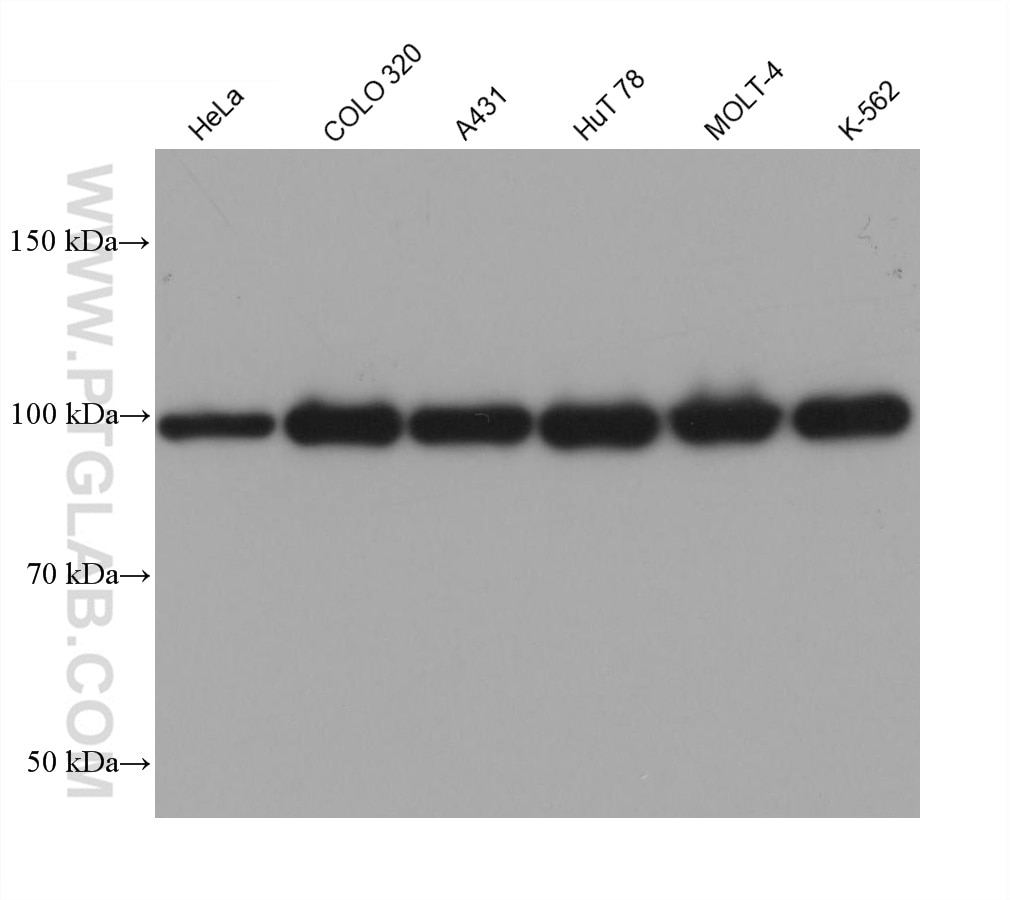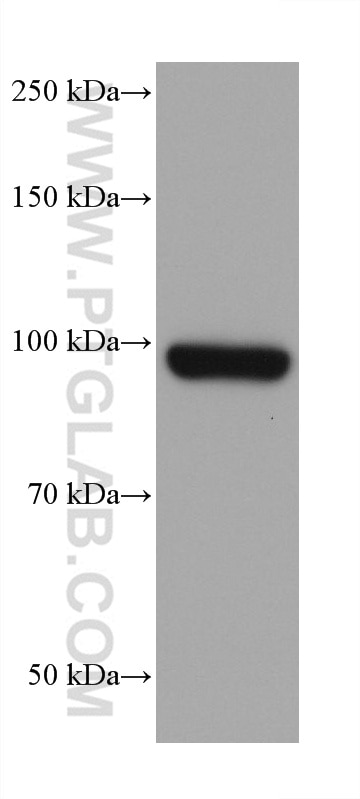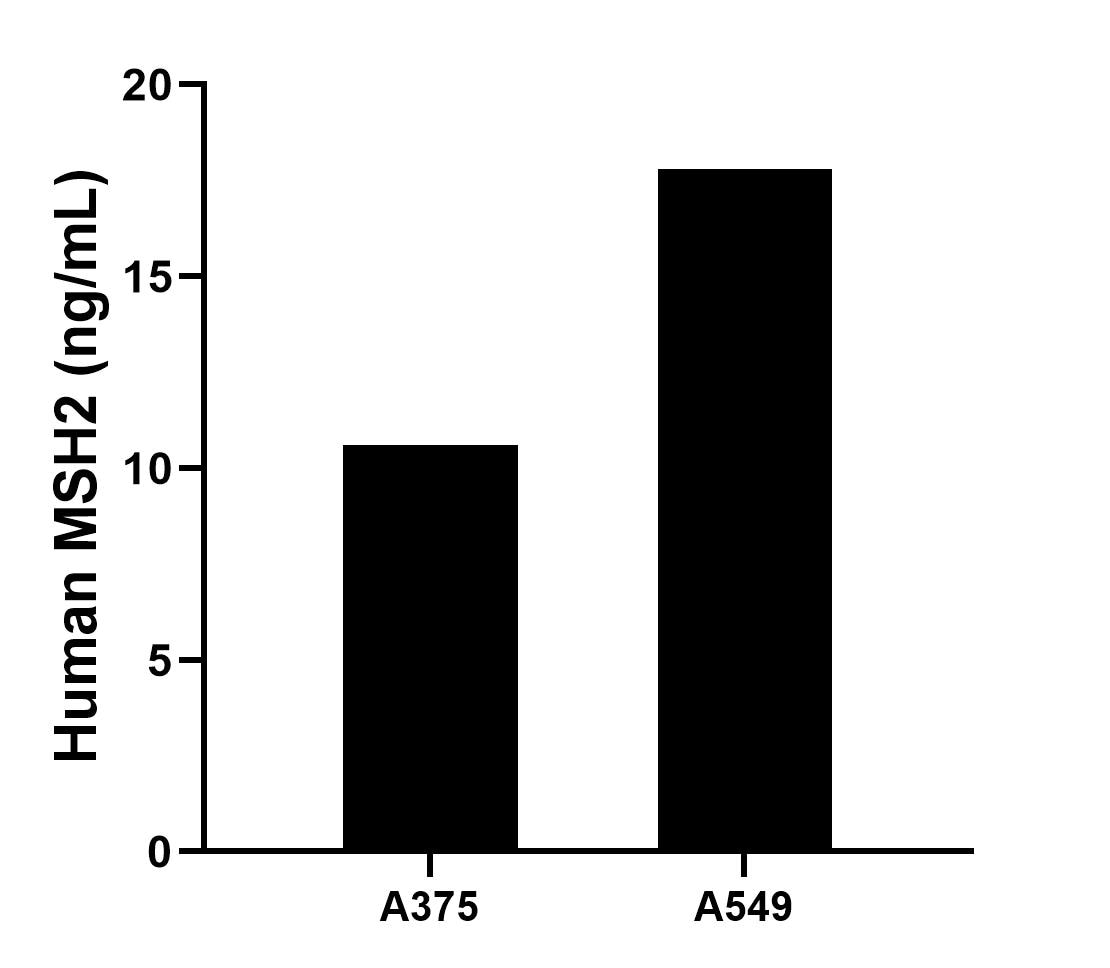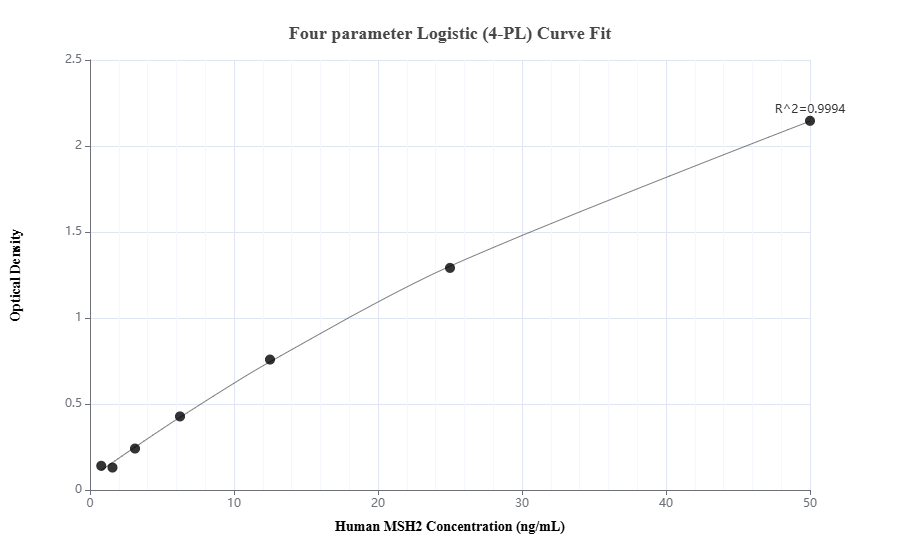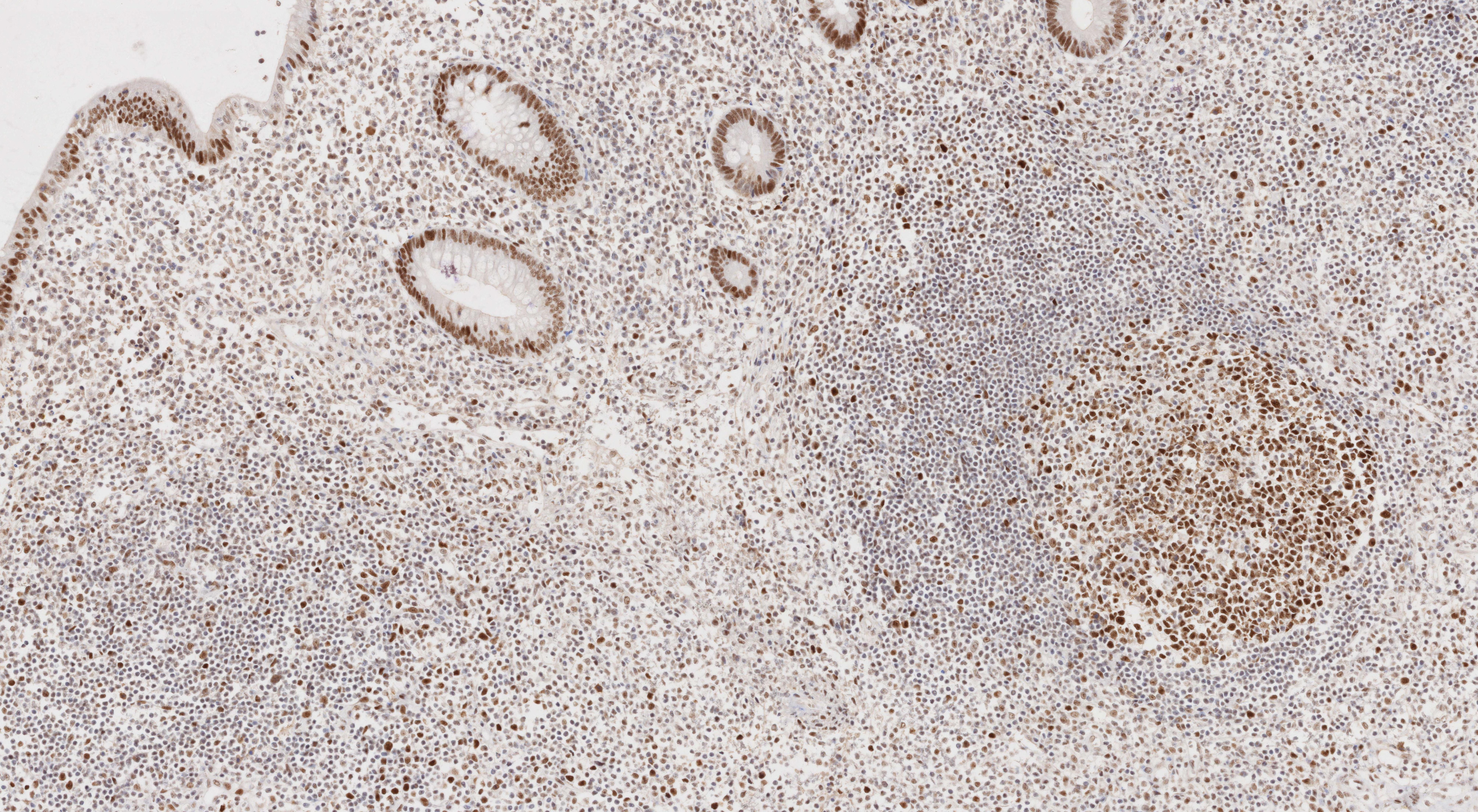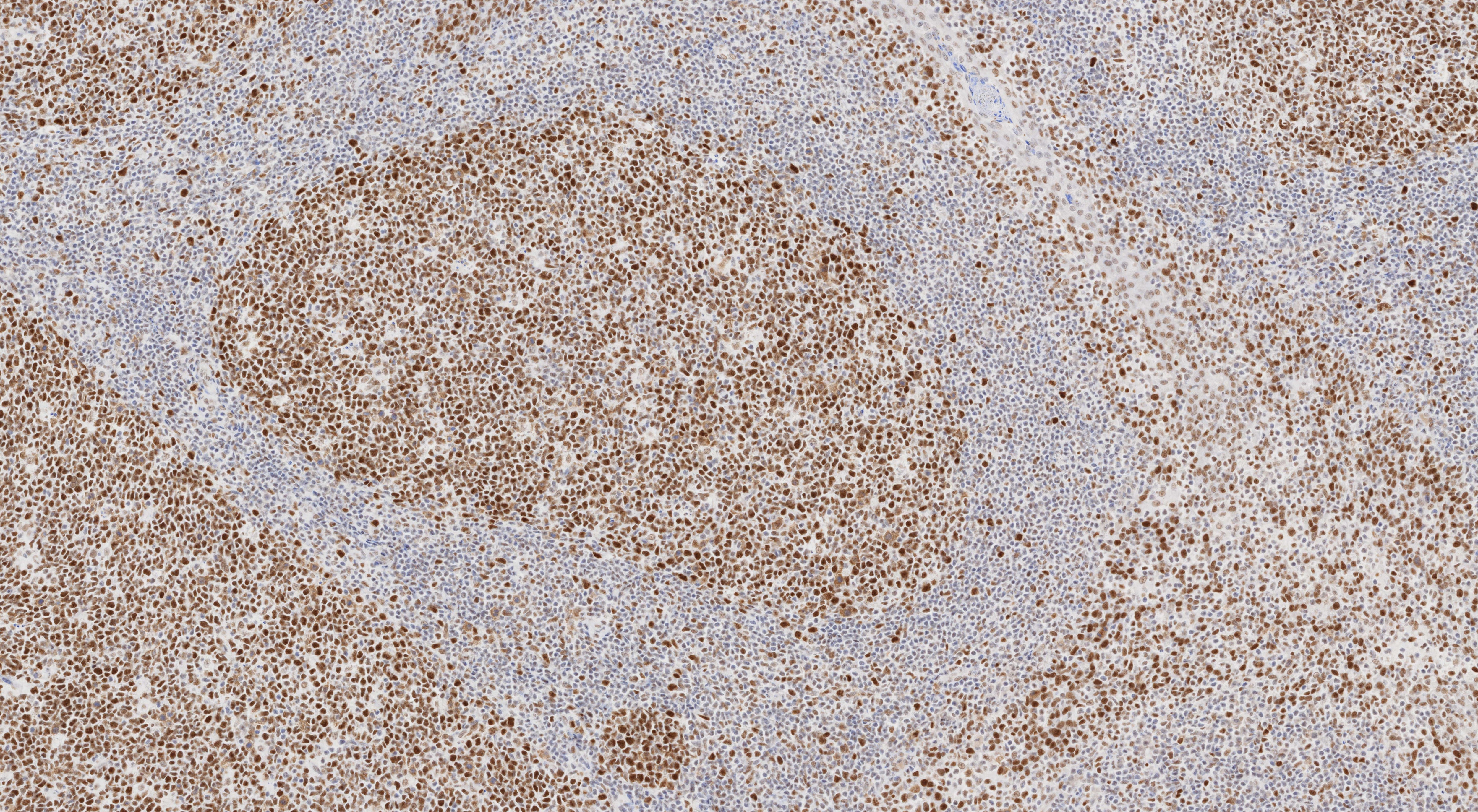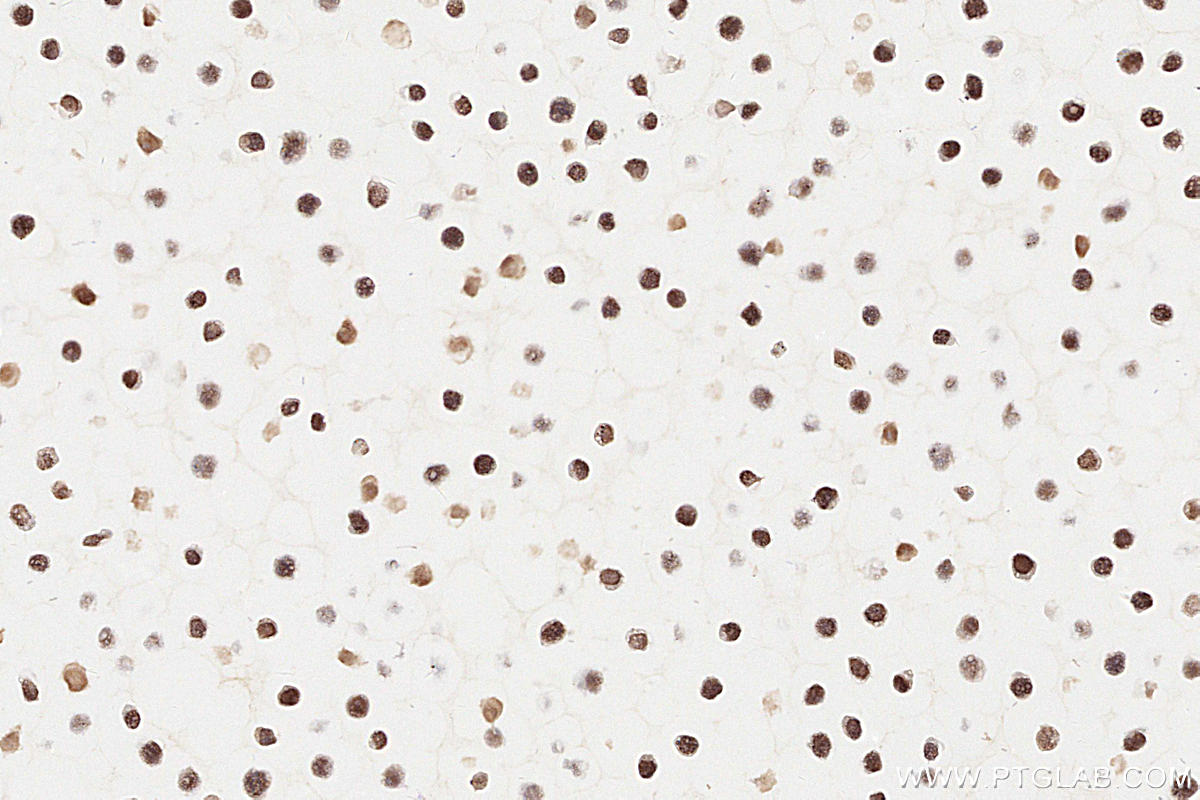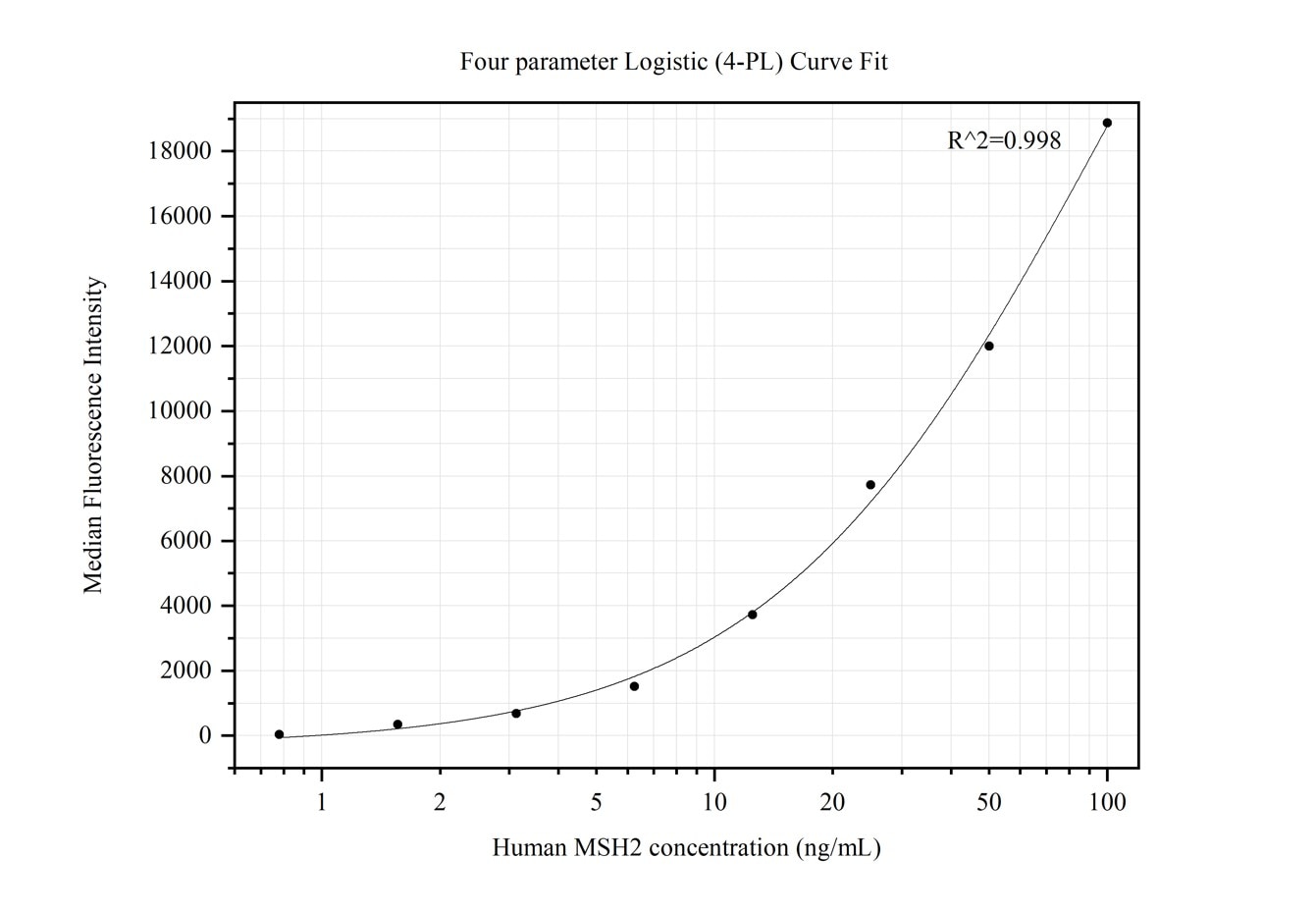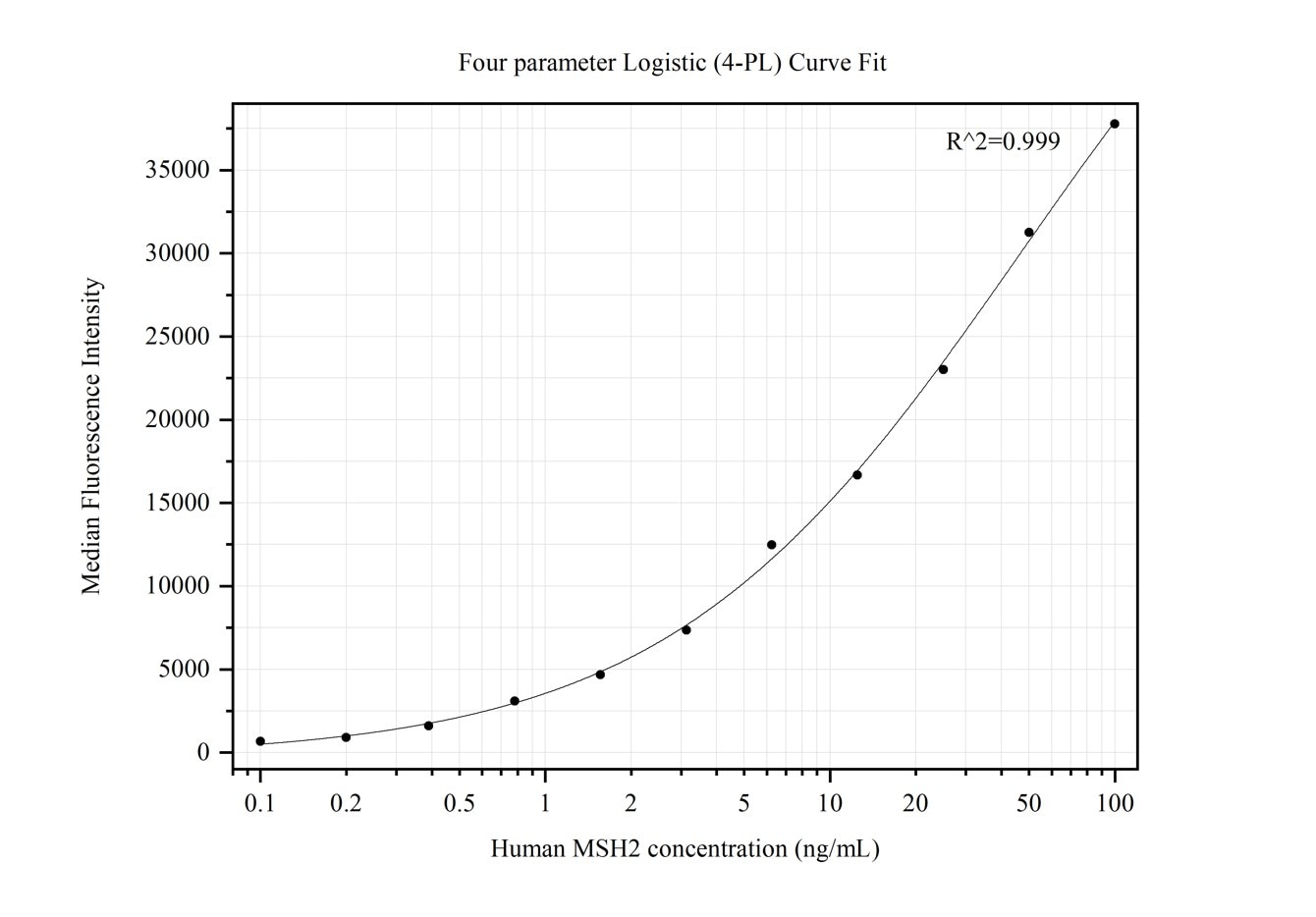Product Information
60161-2-PBS targets MSH2 as part of a matched antibody pair:
MP50235-1: 60161-1-PBS capture and 60161-2-PBS detection (validated in Cytometric bead array, Sandwich ELISA)
MP50235-2: 60161-2-PBS capture and 60161-3-PBS detection (validated in Cytometric bead array)
Unconjugated mouse monoclonal antibody pair in PBS only (BSA and azide free) storage buffer at a concentration of 1 mg/mL, ready for conjugation.
This conjugation ready format makes antibodies ideal for use in many applications including: ELISAs, multiplex assays requiring matched pairs, mass cytometry, and multiplex imaging applications.Antibody use should be optimized by the end user for each application and assay.
| Tested Reactivity | human |
| Host / Isotype | Mouse / IgG2a |
| Class | Monoclonal |
| Type | Antibody |
| Immunogen |
CatNo: Ag7835 Product name: Recombinant human MSH2 protein Source: e coli.-derived, PGEX-4T Tag: GST Domain: 585-934 aa of BC021566 Sequence: SSGYVEPMQTLNDVLAQLDAVVSFAHVSNGAPVPYVRPAILEKGQGRIILKASRHACVEVQDEIAFIPNDVYFEKDKQMFHIITGPNMGGKSTYIRQTGVIVLMAQIGCFVPCESAEVSIVDCILARVGAGDSQLKGVSTFMAEMLETASILRSATKDSLIIIDELGRGTSTYDGFGLAWAISEYIATKIGAFCMFATHFHELTALANQIPTVNNLHVTALTTEETLTMLYQVKKGVCDQSFGIHVAELANFPKHVIECAKQKALELEEFQYIGESQGYDIMEPAAKKCYLEREQGEKIIQEFLSKVKQMPFTEMSEENITIKLKQLKAEVIAKNNSFVNEIISRIKVTT Predict reactive species |
| Full Name | mutS homolog 2, colon cancer, nonpolyposis type 1 (E. coli) |
| Calculated Molecular Weight | 105 kDa |
| Observed Molecular Weight | 105 kDa |
| GenBank Accession Number | BC021566 |
| Gene Symbol | MSH2 |
| Gene ID (NCBI) | 4436 |
| Conjugate | Unconjugated |
| Form | Liquid |
| Purification Method | Protein A purification |
| UNIPROT ID | P43246 |
| Storage Buffer | PBS only, pH 7.3. |
| Storage Conditions | Store at -80°C. |
Background Information
MSH2, named for its homologous to the E.coli MutS gene, takes part in DNA mismatch repair(MMR) to maintain the stability of DNA. MSH2 contains a helix-turn-helix domain, which responds for binding to DNA. Also, MSH2 has a direct role in mutation avoidance and micro-satellite stability in cell.

